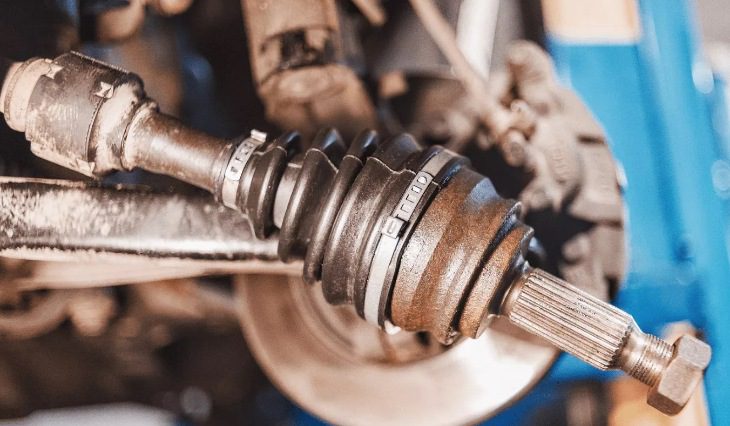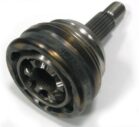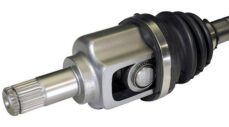
Crunch when turning the steering wheel in motion
Content
Do you have an unpleasant crunch when you turn the steering wheel to one side? In this article, we will consider the main reason for the appearance of a crunch when turning and do not forget to indicate the minor ones that are less common.
In 95% of cases, the cause of the crunch is a CV joint - a constant velocity joint (in slang it can be called a grenade).
There was a crunch when turning the steering wheel
As we have already described above, the cause of the crunch in most cases is the CV joint. Let's see why it starts to crunch.
The device of this spare part is shown in the photo below. In the widest part, balls are located (as in bearings) and each such ball has its own seat, which eventually breaks due to wear. Therefore, in certain positions of the wheel, the ball leaves its seat, which causes grazing of rotating parts with a characteristic crunch, and sometimes wedging of the wheel.

Critical crunch
Of course critical. It is highly undesirable to continue driving in the event of such a malfunction. If you get carried away, you can wait for the CV joint to fall apart completely and you can lose one of the drives. Wheel wedge can be another nuisance. If this happens at speed, then you risk losing control and getting into an accident. Therefore, we recommend that if a crunch is detected, immediately proceed to repair the malfunction.

Fault repair
The CV joint is not a repairable part, and therefore the repair consists only in a complete replacement. In general, for most cars, SHRUS costs reasonable money, exceptions may be premium brands.
Earlier we described the process CV joint replacement for Chevrolet Lanos with step by step photos. This instruction will help you understand the basic steps of replacement.
What else can cause a crunch
There are also more rare cases when the crunch is created not by the CV joint, but by other parts of the chassis, we will list them:
- wheel bearings;
- steering rack;
- the wheel is touching the arch (unlikely, but also worth paying attention to).
Bearing failure is easy to identify. It is necessary to hang the front wheels in turn and rotate them. If the bearings are faulty and wedged, then the wheel will slow down, and sometimes make a characteristic “grazing” sound. The moment of knocking, as a rule, manifests itself in the same position of the wheel.
It is worth noting! In the event of a breakdown, bearings hum and whistle more often than a crunch.
Diagnosing a steering rack malfunction is much more difficult. The crunch in this case must be looked for precisely at the moment of turning the steering wheel or turning in place. It is also worth observing the change in steering behavior: the car also responds well to steering turns or not, whether there are times when it becomes difficult to turn the steering wheel or vice versa easy.
If any of these symptoms are observed, then most likely you should resort to a more detailed disassembly and diagnosis of the problem, since the steering is not a system to which you can turn a blind eye. It directly affects security.
Questions and answers:
Why does the rake crunch? There can be many reasons for this effect in steering. A specialist must diagnose the malfunction. Crunching occurs due to wear on one or more moving parts.
What can crunch when turning to the left? In this case, first of all, you should check the condition of the CV joint. The crunch of this detail appears during movement. If the car is stationary and a crunch is heard when turning the steering wheel, check the steering.
What CV joint crunches when turning to the left? Everything is very simple, turning left - crunches right, turning right - left. The reason is that when turning, the load on the outer wheel increases.
